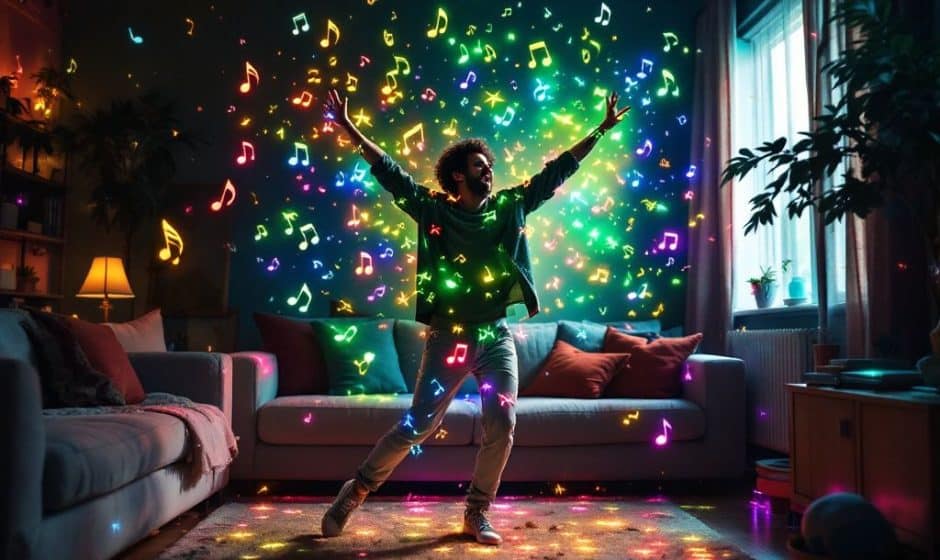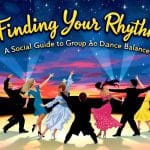You know that feeling when you’re alone at home, staring at your reflection in the mirror, and thinking, “Wow, I’d love to be able to dance fluently on my own terms”? Yeah, let’s talk about it. Maybe you’ve tried to follow along to choreography from popular video clips, and maybe you’ve awkwardly stepped over your own feet more times than you’d care to admit. The struggle is real, but trust me, it doesn’t have to stay that way. Solo dance isn’t just about looking good on a dance floor somewhere; it’s a form of self-expression, exercise, and yes, even a path toward hormone regulation and overall health.
Finding Your Groove
First things first, let’s talk about why solo dance is not just a fun activity but also a beneficial lifestyle choice. Engaging in solo dance can be an incredible way to achieve solo dance health, promoting both mental and physical well-being.
Hormone Regulation Through Dance
What’s fascinating is how solo dancing can help regulate hormones in your body. As you dance, your body releases endorphins—the feel-good hormones—which lifts your spirits and can brighten your mood drastically. But there’s more! Solo dancing can help balance cortisol levels, those sneaky little hormones that have a knack for stress. By moving your body and focusing on the rhythm, you help mitigate the things weighing you down, freeing up your mind and stabilizing hormone levels to keep you feeling great.
Beating the Loneliness
And while we’re on the topic of those solitary dance vibes—gosh, they can be empowering! Have you ever waltzed your way through a tough day by just letting loose when no one’s watching? Dancing alone is not only about learning some skills. It’s also a meditative act. You come away from it not only physically energized but mentally and emotionally too; it’s a singular, healing journey.
Steps to Start Your Solo Dance Journey
Alright, let’s break down how you can get started with solo dance. It’s not rocket science—just honest fun and movement!
Step 1: Choose Your Space

Find a place where you feel most comfortable. It could be your living room, a park, or your backyard. The key is that it should be a place where you can move freely without feeling self-conscious.
Step 2: Pick Your Tunes
Tunes set the tone (pun absolutely intended). Make a playlist that offers a mix of tempos or even cultures, if you’re feeling adventurous. You might have fast beats for some days and calm instrumental music for others. Let the music engage your emotions, helping you move in response to how you feel.
Step 3: Let Your Body Talk
Before you worry too much about technique, just move your body however it feels right with the music. This is crucial. The best dance comes from a place of authenticity and feeling. It’s about self-discovery as much as it is about expression. So let yourself be a little silly, lose yourself in a surprisingly complex groove, and lean all the way into getting lost.
Step 4: Gradually Refine Your Moves
Once you’re comfortable moving freely, you might feel like learning specific dance moves or styles. This could range from hip-hop to ballroom—whatever tickles your fancy. Pick a style, perhaps some tutorials online, and work them into your freestyle sessions. Remember, it’s not about perfection; just about finding what feels good and right for you.
Taking It Up a Notch: Techniques and Tips
There are a few techniques that’ll not only elevate your skill but deepen the experience and benefits too. I’ve got some practical tips that’ll keep you grooving efficiently and effectively.
Build a Routine
Creating a daily or weekly routine is key to maintaining your progress and motivation. Treat it like an essential part of your day; something that you look forward to doing. Maybe do it in the morning to ignite your day with energy or in the evening to detox your mind prior to winding down.
The Magic of Visualization

Did you know that visualizing your moves can be just as effective as practicing them? Close your eyes and picture yourself doing every step flawlessly. This mental practice reinforces neural pathways and boosts confidence when you physically attempt them. Neat, isn’t it?
Listen To Your Body
Sometimes, those aches and pains speak the language of rest. Listen. It’s equally crucial to grant your body recovery time, much like you’d rest between physical workouts. Allow those muscles to repair and get ready for the next exhilarating session.
Solo Dance and Overall Health
Beyond the obvious physical workout, there are several aspects of health and wellness boosted by solo dance. Here’s a closer look for your consideration:
Cardiovascular Fitness
Do you want to increase lung capacity and strengthen your heart? Dance your heart out! The most joyful workout, solo dancing not only enhances your cardiovascular fitness but does so without even making you feel like you’re slogging through a chore. Running is great and all, but wouldn’t you rather cha-cha slide?
Flexibility and Balance
Dance regularly, and you might find yourself more flexible over time. Moves often require stretching and using various parts of your body. This not only helps your range of motion but can lead to improved balance which is vital as we age.
Emotional Release and Mental Health
Besides cortisol regulation, dance provides an emotional outlet. It allows you to release bottled-up feelings, experience catharsis, and lift overall emotional well-being. Solo dancers regularly report feeling happier, calmer, and phenomenally more balanced.
Breaking the Routine

Ever find yourself in a rut? Solo dancing introduces spontaneity into routine life, offering a break from the mundane. It encourages creative thought—stimulates your brain—and, who knows, you might stumble upon other areas of interest!
Common Pitfalls (and How to Avoid Them!)
Even though there’s no wrong way to dance, there are a few trip-ups you’ll want to be wary of.
Don’t Be Overcritical
You’re your biggest fan and harshest critic. It’s easy to nitpick but try to focus more on how it feels than how it looks. Gradually, your technique will follow.
Avoid One-track Interest
Diversify! Don’t restrict yourself to one genre; experiment. Salsa one day, pop the next. Dabble in country line dancing if that’s what sets your foot tapping. Broaden your interests and keep the spark alive.
Consistency Over Perfection
No one’s expecting a flawless performance every time. What matters is consistency—honing skills and enjoying the moment. Crafting something perfect is secondary; creating something worthwhile is primary.
Wrapping It All Up
Solo dance is not just a practice; it’s a joyous, holistic approach to health—a dance therapy of sorts that connects with who you are and grows you into who you wish to be. It demands just one prerequisite: you. No expensive equipment, no recurring fee, just you and your willingness to move to the music. The dance enables hormone regulation, molds better solo dance health, and can open up a wellspring of creativity and balance. So grab by the rhythm, let yourself go, and with every step, meet life head-on.
Happy dancing!
Frequently Asked Questions
What causes a hormonal imbalance?
A hormonal imbalance can be caused by natural changes or stages in your life, including puberty, pregnancy, perimenopause, and menopause. Other causes include partial or full hysterectomy, tumors, adenomas, and autoimmune diseases that affect the endocrine glands[3][5].
How does hormone replacement therapy (HRT) work for hormone regulation?
Hormone replacement therapy works by topping up or replacing missing hormones. During perimenopause and menopause, levels of oestradiol, progesterone, and sometimes testosterone decline. HRT involves prescribing these hormones to improve symptoms and future health, often in the form of patches, gels, sprays, or pills[1][3].
What are the common signs and symptoms of a hormonal imbalance?
Common signs and symptoms include irritability and fatigue, mood swings and depression, skin dryness and loss of elasticity, water retention and weight gain, osteoporosis and joint pain, less interest in sex, insomnia, and other sleep disorders, as well as memory issues and difficulty concentrating[3][5].
What are the different types of hormone therapy available for hormone regulation?
Hormone therapy includes systemic hormone therapy (in pill form, patches, rings, gel, cream, or spray), low-dose vaginal products (cream, tablet, or ring forms), and bio-identical hormone replacement therapy, which is structurally identical to human hormones and may have fewer side effects[1][3].
References




